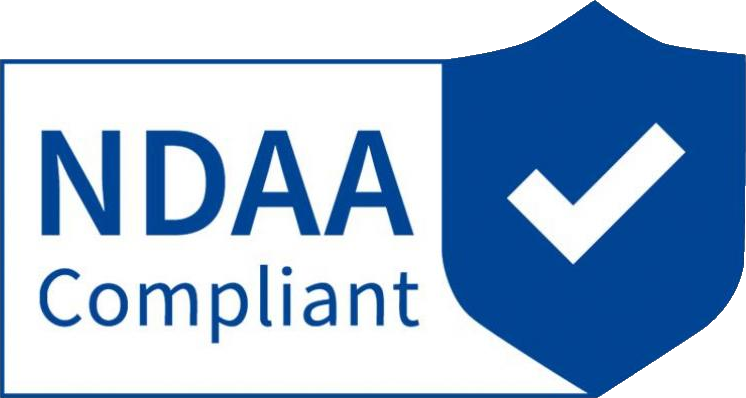Frequently Asked Questions for IP Cameras
FAQ
Find answers to your CCTV issues.
IP Camera FAQ
Need help choosing the right IP camera? Our FAQ points out the ins and outs of dome, turret, and bullet styles, so you can find the perfect fit for your security needs.
Why can’t I open the default IP address 192.168.0.123 via my web browser?
The camera is set to DHCP mode by default, it will obtain the IP settings from your router automatically . Please install the IP search tool to find the camera’s IP address. The camera IP address will be 192.168.0.123 if there is no router in the LAN.
How do I reset the password?
The default Username is admin and password is 123456. To reset, please install the search tool to search the cameras IP and click Reset factory settings button.
How do I upgrade the firmware?
1) We post firmware updates on our resources page.
2) You can use the web browser, search tool, or PC client to upgrade the firmware.
3) Go to the Configuration > System > update, click browse and select the firmware, then click Upgrade button.
How do I fetch the RTSP video stream and http snapshot?
1) VLC test Main Stream: rtsp://admin:123456@IP:554/stream0
2) VLC test Sub Stream: rtsp://admin:123456@ IP:554/stream1
3) Low resolution snapshot: http://IP/cgi-bin/snapshot.cgi?stream=1
4) HD snapshot : http://IP/cgi-bin/snapshot.cgi?stream=0
Why does the NVR not show an image after adding a camera?
1) Make sure you selected the right protocol and enter the correct username and password when adding the cameras
2) Make sure the NVR and IP camera are the same IP subnet.(eg. NVR:192.168.1.x, and IP camera:192.168.1.y)
3) Try changing the camera encode mode to H.264 if the NVR can’t support H.265. (Configuration -> Camera -> Video > Encode mode: H.264)
How to make the NVR record in motion detection mode?
1) Add the IP camera via ONVIF protocol
2) Change the NVR record mode to Motion Detection mode
3) Check the NVR screen MD icon and try playback
Please refer to your NVR manual for NVR motion record option
Where can I control the motorized auto focus lens zoom?
1) Using the camera’s web interface
2) Control zoom by mobile app
3) Roll the mouse wheel at the search tool preview window
4) Find the PTZ menu in your NVR to control lens zoom
Which third-party security software are compatible?
Milestone, Avigilon, Pelco VxToolbox, Blue Iris, iSpy, Synology, Digifort
Camera Accessories FAQ
Our FAQ has the answers to your IP camera accessory questions. Find expert advice on junction boxes, mounts, and more to ensure a seamless installation.
What is a junction box, and why is it important for IP cameras?
A junction box provides protection for the camera's wiring connections, keeping them safe from environmental factors and ensuring a clean installation.
How do I choose the right junction box for my dome or turret camera?
Choose a junction box compatible with your camera's size and style. Ensure it has enough space for wiring and is weatherproof if installed outdoors.
Can I install a turret camera without a junction box?
While it's possible to install a turret camera without a junction box, using one ensures better cable management and protects connections from damage.
What types of mounts are available for dome cameras?
Common mount types for dome cameras include ceiling mounts, wall mounts, and pendant mounts, allowing flexible placement to fit various environments.
Are there specific mounts for turret cameras?
Yes, turret cameras can be mounted using surface mounts or pole mounts, allowing for easy adjustments and secure installation on different surfaces.
How do I ensure my IP camera is securely mounted?
Use the appropriate mounting hardware for your camera type, follow the manufacturer's guidelines, and ensure the mount is securely attached to a sturdy surface.
What are the benefits of using a weatherproof junction box?
A weatherproof junction box protects wiring from moisture and dust, ensuring reliable performance and longevity of your IP cameras, especially in outdoor settings.
Can I use the same junction box for both dome and turret cameras?
Yes, as long as the junction box is compatible with the dimensions and requirements of both camera styles. Verify the specifications for a proper fit.
What should I consider when installing a mount for a dome camera?
Consider the camera's field of view, height, and angle when choosing a mount. Ensure it's installed on a stable surface to avoid vibrations.
Do I need any additional accessories for IP camera installation?
Besides mounts and junction boxes, consider using cable management clips, power adapters, and surge protectors to enhance your installation setup.

